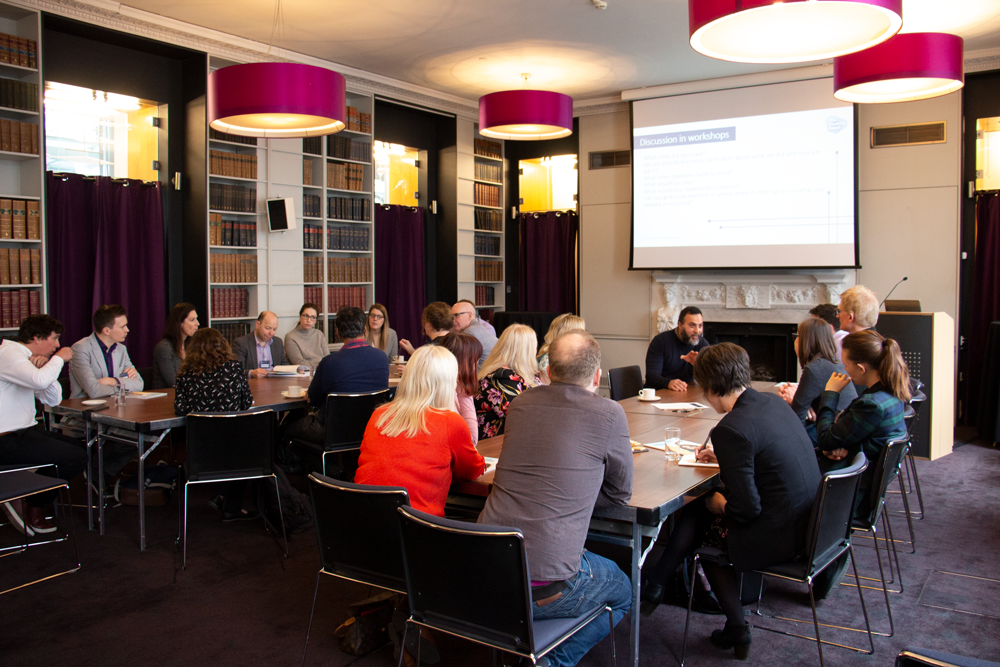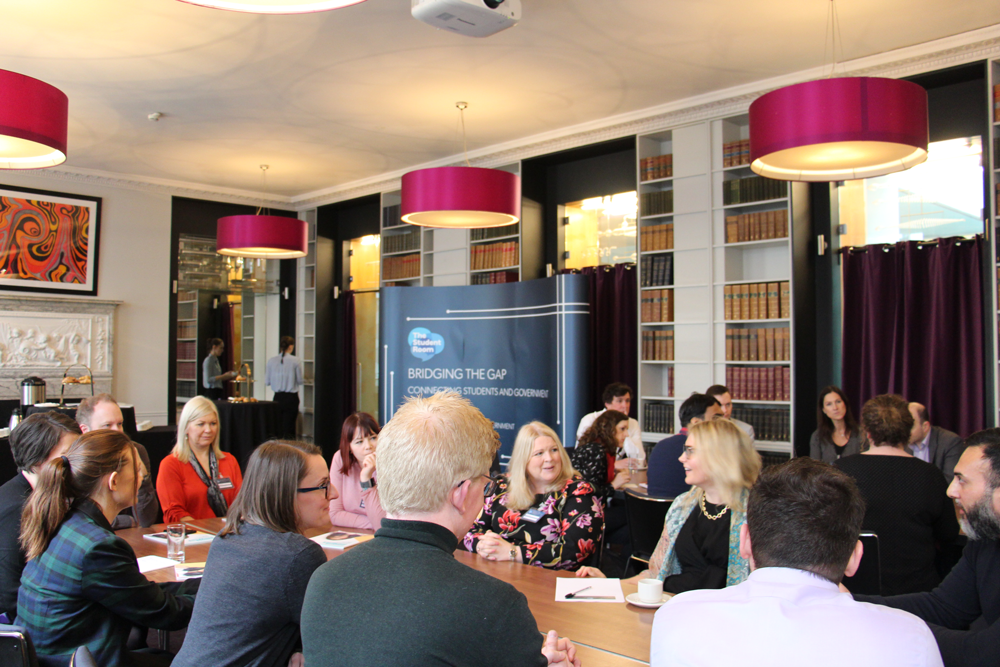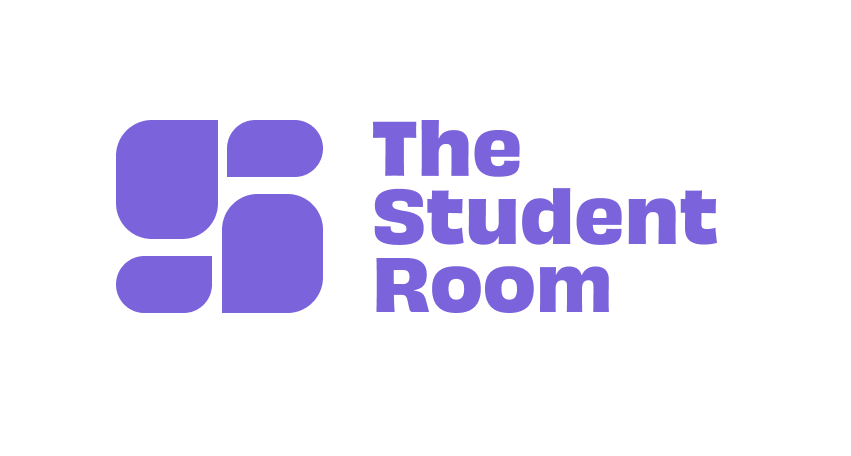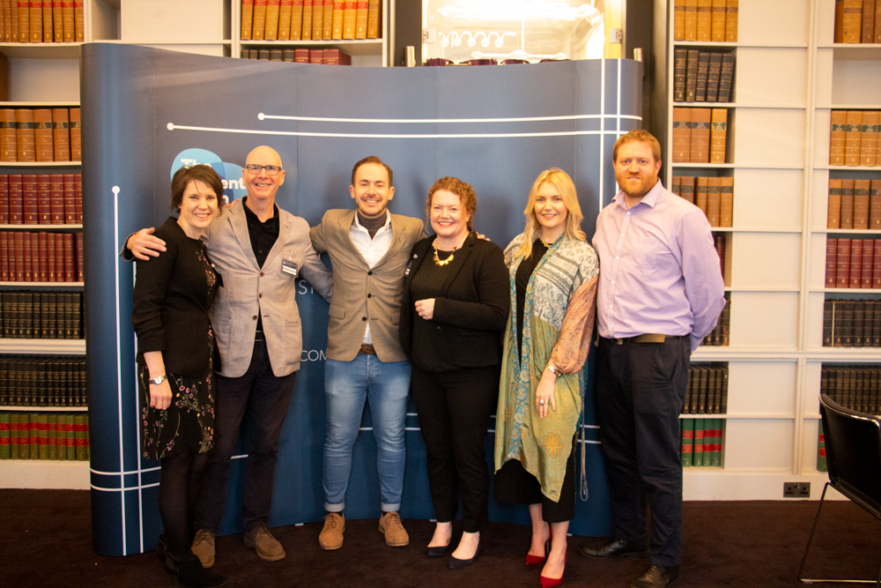Bridging the Gap is an exclusive event series that aims to provide government representatives with valuable insights from the youth market in a bid to connect students and government.
On Wednesday 20th March, we hosted the second event of the series at the historic Royal Institution in London, an inspiring venue exhibiting the world of science and learning. With the presence of inspiring scientific research in the air, we turned the focus to student research and kicked the day off by sharing how we gather insight from students and young people through The Student Room.
Capturing insight from young people
Ahead of Bridging the Gap, we asked attendees what they wanted to know from their target audiences and we posed those questions to our student community.
Covering topics such as apprenticeships, communications, finance, student health and teaching, we took guests through how we generated useful insight to answer their queries before presenting the key findings.
Social listening and informal research
Hannah Morrish, Student Choice and Higher Education Lead at The Student Room, explained how we use social listening to monitor the wide range of existing conversations on-site to encourage relevant peer-to-peer conversation which we use to represent the views of young people and students.
To support the authentic discussions, we hosted onsite polls to capture quantitative data from a wider sample of users.
Formal market research
Julie Vincent, Insight Director at TSR Insight, then took to the stage to present the findings from the questions we posed via quantitative surveys to the community and shed light on how existing secondary research sources can also be used.
Our secondary source was Options 2018 where TSR surveys over 10,000 students every year to understand their decision-making journey and their perceptions of the available options after school, college and university.
Then it was time to demonstrate the findings and answer our guests burning questions.

Apprenticeships
In Options, we found that 44% of respondents weren’t confident they knew how to apply for an apprenticeship, but confidence increased with age and Year 13’s were more confident than younger respondents. It was clear they required more guidance and support and almost teaching about this option from their school or college, not just information.
Some students expressed their concerns that the level of support for apprenticeships wasn’t as comprehensive as other options such as A-levels and university routes. One student said:
“My college focuses on helping students look at universities, but I haven’t seen anything about higher apprenticeships.”
The polls we ran revealed a quarter of those who respondents didn’t know whether it was easy or difficult to apply for an apprenticeship and the highest percentage (31%) found it quite difficult. Respondents suggested a simpler method of application – a centralised information and application system similar to UCAS to make the process easier to understand. One respondent recommended:
“One specific website where all apprenticeships are posted e.g. UCAS for apprenticeships.”
This would also help solve some of the confusion our users had around being unable to find a relevant apprenticeship in the subject they were interested in:
“I don’t think it can be (improved as) there are so many people applying for the same opportunities. The only difficulty I have had is finding one in journalism.”
Communication
One area of interest asked about the confidence in online information. Findings suggested online information played a huge role in research and seeking information. In Options 2018 we found that online sources such as, university websites, the UCAS website, The Student Room and online prospectuses were the most used information sources when making a pathway decision.
Hannah then brought the conversation back to what students really want from communication and shared The Student Room’s experience engaging with our community in partnership with government, and that’s; “Transparency of purpose is motivating for our audience.” What young people require from government bodies is authentic dialogue and open two-way communication.
Career in teaching
Lastly, our guests wanted to understand student perceptions of a career in teaching. We used a poll to ask if our users would consider training to be a teacher and found a huge 76% said no.
We found that this generation buys into the ideals of teaching but are unconvinced by the remuneration and lifestyle. The altruistic and inspirational nature of the youth market is evident in the qualitative feedback, but they seem to also be hugely aware of the negative narrative around teaching such as funding, reforms, stress and attainment analysis, which seems to put them off.
“I would love to make a difference to children’s lives and enrich their understanding of the world.”
“Being able to share the interest and enthusiasm I have for my subject.”
“There are so many complaints from teachers now about funding and difficulty dealing/managing with the ongoing changes. It just put me off.”
“I don’t think I could live with that stress every day. They don’t seem to get paid all that much either for what they have to put up with.”
The useful insight didn’t end there, we shared further findings about finance, money worries, value for money, awareness of technical routes, student health and receiving careers advice. For more insight and findings, please submit your request here.
Bridging the Gap Workshops

We spent the rest of the morning hosting workshops where our guests could discuss their pain points, objectives and strategic challenges, with researchers, community experts from The Student room and fellow government representatives.
The event was a thriving success and if you’re interested in attending one of the upcoming Bridging the Gap events, please get in touch with us to find out more.

